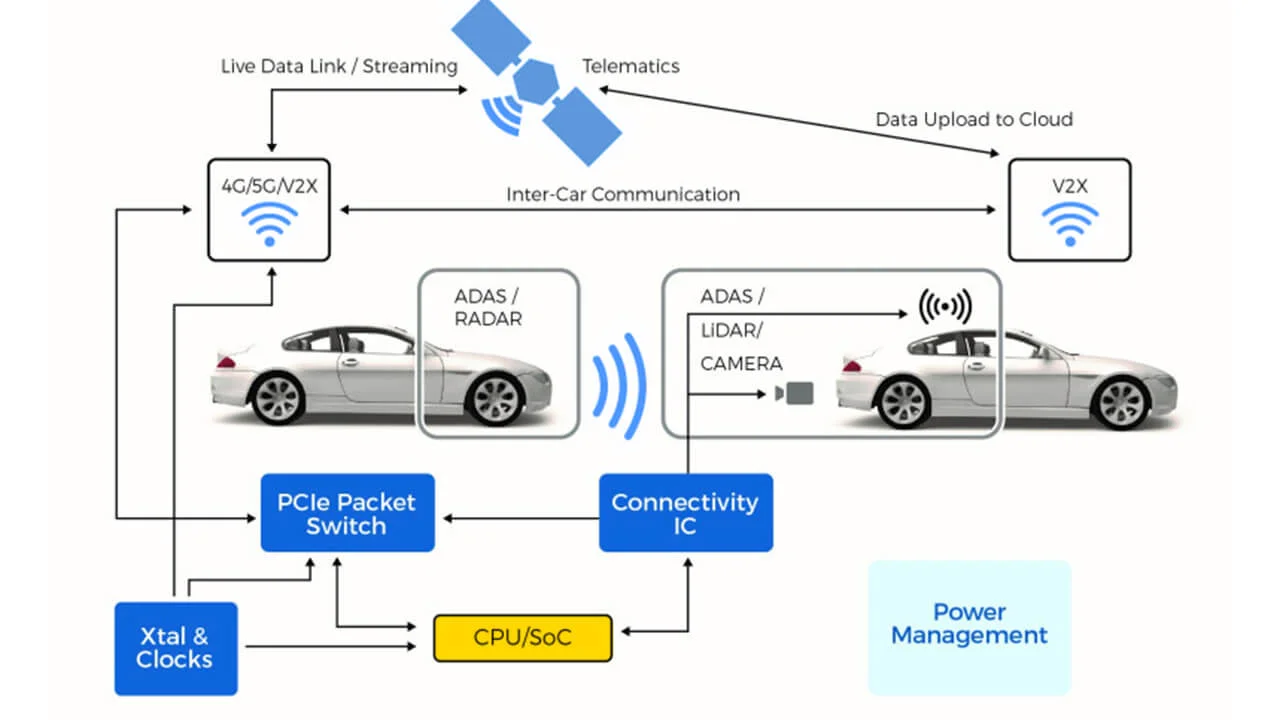Time: 2025-02-18 13:51:19View:
Field-Programmable Gate Arrays (FPGAs) play a critical role in the development and deployment of autonomous driving systems in the automotive industry. Their unique architecture, which combines high-performance parallel processing with reconfigurability, makes them ideal for handling the complex and computationally intensive tasks required for autonomous vehicles. Below is a detailed explanation of the application of FPGAs in automotive autonomous driving:

Autonomous vehicles rely on a variety of sensors, including LiDAR, radar, cameras, and ultrasonic sensors, to perceive their surroundings. FPGAs are widely use
d to process the massive amounts of data generated by these sensors in real time.
LiDAR Processing:
FPGAs are used to process point cloud data from LiDAR sensors, enabling object detection, distance measurement, and 3D mapping.
Their parallel processing capabilities allow for real-time filtering, clustering, and classification of LiDAR data.
Radar Signal Processing:
FPGAs are ideal for processing radar signals, which require fast Fourier transforms (FFTs) and other signal processing techniques to detect objects and measure their speed and distance.
Camera Image Processing:
FPGAs are used for real-time image processing tasks such as object detection, lane detection, and traffic sign recognition.
They can implement convolutional neural networks (CNNs) for computer vision tasks with low latency.
Autonomous vehicles combine data from multiple sensors to create a comprehensive understanding of the environment. FPGAs are well-suited for sensor fusion due to their ability to process data from multiple sources simultaneously.
Data Synchronization:
FPGAs can synchronize data from LiDAR, radar, and cameras, ensuring that all sensor inputs are aligned in time and space.
Fusion Algorithms:
FPGAs implement fusion algorithms like Kalman filters and Bayesian networks to combine sensor data and improve the accuracy of object detection and tracking.
FPGAs are increasingly used to accelerate AI and machine learning tasks in autonomous driving systems.
Neural Network Acceleration:
FPGAs can be programmed to accelerate the inference of deep learning models, such as CNNs for object detection and semantic segmentation.
They offer a balance between performance and power efficiency, making them suitable for edge computing in vehicles.
Custom AI Algorithms:
FPGAs allow for the implementation of custom AI algorithms tailored to specific autonomous driving tasks, such as path planning and decision-making.
Autonomous vehicles must make split-second decisions based on sensor data. FPGAs enable real-time decision-making by processing data with extremely low latency.
Path Planning:
FPGAs can implement algorithms for real-time path planning, ensuring that the vehicle navigates safely and efficiently.
Obstacle Avoidance:
FPGAs process sensor data to detect obstacles and calculate avoidance maneuvers in real time.
FPGAs are used in V2X communication systems, which enable vehicles to communicate with each other and with infrastructure.
Protocol Implementation:
FPGAs can implement communication protocols like DSRC (Dedicated Short-Range Communication) and C-V2X (Cellular Vehicle-to-Everything) with high reliability and low latency.
Data Security:
FPGAs are used to implement encryption and authentication algorithms to secure V2X communications.
Autonomous driving systems must meet stringent functional safety standards (e.g., ISO 26262). FPGAs contribute to safety and redundancy in several ways:
Fail-Safe Mechanisms:
FPGAs can implement fail-safe mechanisms to ensure that the vehicle operates safely even in the event of a system failure.
Redundant Processing:
FPGAs can be used to create redundant processing paths, ensuring that critical systems remain operational if one path fails.
FPGAs are more power-efficient than traditional GPUs for many autonomous driving tasks, making them ideal for use in electric and hybrid vehicles where power consumption is a concern.
Low-Power Design:
FPGAs can be optimized for low-power operation, reducing the overall energy consumption of the autonomous driving system.
One of the key advantages of FPGAs is their reconfigurability, which allows them to be adapted to different tasks and updated as algorithms evolve.
Algorithm Updates:
FPGAs can be reprogrammed to support new algorithms and features, making them future-proof for evolving autonomous driving technologies.
Custom Hardware Acceleration:
FPGAs allow for the creation of custom hardware accelerators tailored to specific tasks, such as image processing or sensor fusion.
Several companies and platforms leverage FPGAs for autonomous driving:
Xilinx (now AMD):
Xilinx FPGAs, such as the Zynq UltraScale+ MPSoC, are widely used in autonomous driving systems for sensor processing, AI acceleration, and V2X communication.
Intel FPGAs, such as the Arria 10 and Stratix 10, are used in ADAS and autonomous driving platforms for real-time processing and AI acceleration.
Audi:
Audi uses FPGAs in its zFAS (Central Driver Assistance Controller) for sensor fusion and decision-making in autonomous vehicles.
Tesla:
Tesla has explored the use of FPGAs for custom hardware acceleration in its autonomous driving systems.
While FPGAs offer many advantages, there are challenges to their widespread adoption in autonomous driving:
Complexity:
Programming FPGAs requires specialized knowledge, which can increase development time and cost.
Cost:
High-performance FPGAs can be expensive, making them less suitable for cost-sensitive applications.
Competition from ASICs and GPUs:
FPGAs face competition from Application-Specific Integrated Circuits (ASICs) and GPUs, which may offer better performance or cost-efficiency for certain tasks.
Despite these challenges, FPGAs are expected to play a key role in the future of autonomous driving, particularly as the demand for real-time processing, flexibility, and power efficiency continues to grow.
FPGAs are a critical enabler of autonomous driving technology, providing the performance, flexibility, and reliability needed to handle complex tasks like sensor processing, AI acceleration, and real-time decision-making. As autonomous driving systems continue to evolve, FPGAs will remain at the forefront of innovation, helping to make self-driving vehicles safer, smarter, and more efficient.